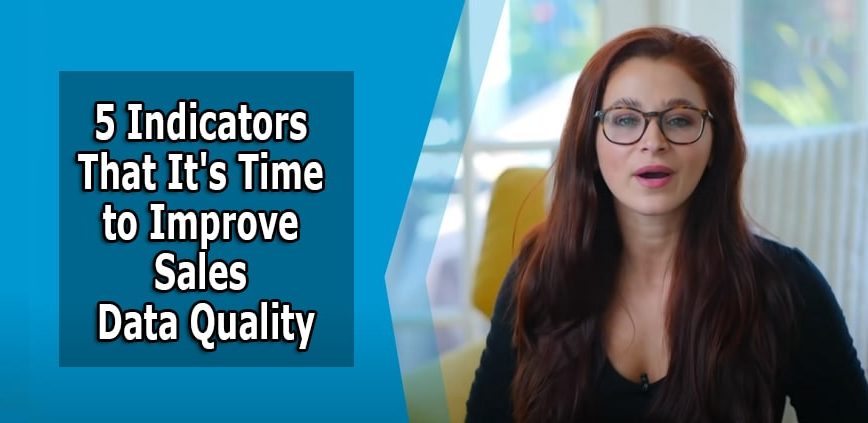Businesses have been worshiping big data for some years now. However, unforeseeable occurrences in 2020 and 2021 demonstrated that income is dependent on sales data. The epidemic flipped markets and sales expectations on their heads, with just 27% of CEOs expecting revenue growth in the following 12 months.
Business purchasers are working on tight budgets, while 36% of consumers want to limit their spending this year, compared to 19% at the start of 2020. It is difficult to attract new clients, and even loyal customers cannot be taken for granted. According to McKinsey, 75% of customers explored a new brand or buying habit in the previous year, while another research revealed that post-COVID loyalty is more fragile than ever.
By the end of Q2 2020, 50% of new users recruited in 2020 have already churned, and the average retention rate is 82% lower than projected. Consumers want customized experiences, lightning-fast response times, and seamless buying journeys across many channels. Only by improving your sales data game will you be able to achieve these expectations.
This isn’t breaking news for most businesses. As a result, this year’s top budget item for e-commerce experts is data and analytics. The ordinary organization has access to too much data. What they need is quality data.
Time to boost the accuracy of your sales data
According to Salesforce’s State of Sales 2020 study, most sales teams will concentrate on enhancing data quality. They will also be considering accessibility during the next year. Do you want to know how to detect whether it’s time to rethink your data gathering processes? And, do you want to ensure you’re investing your resources on dependable, accurate, and trustworthy data? Here are five indicators that can help you decide.
1. Your staff approach sales talks with a lack of knowledge
Quality sales data informs you about your consumers and assists you in developing successful sales processes that increase conversions. That entails more than just stating that “25% of leads aged 25-34 converted.” You need to look for useful, prescriptive insights that tell you what motivates these leads to convert and return so that you can double down on what works and adjust what’s not succeeding.
If you discover that most sales discussions take place in the dark, with no previous understanding of the lead’s pain points and preferences, this is an indication that your sales data is inadequate. Sales dialogues should build on current customer knowledge rather than laying the groundwork for it.
How to deal with it?
Make sure to ask probing questions about your leads’ pain areas and wants, but also broaden your lead research process to get additional relevant consumer information via tracking pixels and social media analysis. It is also critical to ensure that your data collecting procedures are entirely automated and user-friendly.
Your marketing and sales teams may be collecting all the data you want, but if your sales staff are unable to access it at the appropriate moment, it may as well not exist. You should make it as simple as possible for your sales professionals to capture client insights in your CRM and for others to locate them when required.
2. You depend on intuition instead of data
Too often, sales teams claim to be data-driven but are actually emotion-driven. Instead of objective information that sets the agenda, they collect data that matches their agenda. There are several ways that preset prejudices might infiltrate and alter the data you gather, and when you suspect that your data is of low quality, you’ll find it simple to distort it to offer just the “results” you want.
Some of the ways that businesses bias data collection include:
- Including irrelevant questions that may entice individuals to falsify their genuine feelings
- Ignoring seasonal swings, such as spending habits that rise in the lead-up to the winter holidays and then fall in mid-January
- Surveying a tiny sample size that cannot offer a complete picture of the industry
- excluding important consumer profiles from your sample population
How to deal with it?
The first critical step in preventing bias from infiltrating your data gathering procedures is to be open about your poor data quality and the likelihood of prejudice. You may use Qualtrics’ calculator to assess the sample sizes required to derive fair findings.
It’s also a good idea to have someone else go through your survey questions for any hidden biases. You must train salespeople not just on what data to collect, but also on the relevance of the data. When individuals understand why the data they collect is important and how it will be utilized, they are more likely to collect relevant and thorough data.
3. You have no idea whether your outcomes are excellent, awful, or ordinary
Sales data can only take you so far. Even the most objective and meticulously gathered datasets will be useless if they cannot be evaluated. Set benchmarks to measure metrics and analyze data if you want to gain relevant insights.
How to deal with it?
You should ideally have both internal and external benchmarks. Internal benchmarks allow you to compare performance to past marketing campaigns or sales drives, but external benchmarks allow you to determine if your open rates, click-through rates, and other metrics are genuinely excellent or just better than they were.
Connect your measurements to the organization’s bottom line and evaluate if you’re unwittingly monitoring the incorrect measures. If your existing data structure does not provide explanations for certain occurrences, you are most likely measuring the incorrect things.
Concentrate on developing peer group standards via market research companies and trade groups, grade your outcomes on a percentile basis, and develop strategies to enhance your performance.
4. You are taken aback by your current clientele
The quality of the sales data you collect functions as a window into the behavior of your consumers, allowing you to confidently and reliably estimate what your present customers will do and demand in the future. Even if it is hard to anticipate every move the market will make, you should have a general understanding of their tastes and how their wants are always shifting. Sadly, many sales teams allow themselves to be distracted by the need to constantly recruit new clients.
They fail to remember to set up data gathering channels for existing consumers, which leaves them with limited datasets and a general lack of knowledge about the preferences of regular purchasers. The unfortunate reality is that you can’t expect to keep your clients if you don’t grasp their requirements and don’t make an effort to find out what those requirements are. Make it a habit to check how many data gathering channels you’ve established on a regular basis in order to compile information on your current clients.
How to deal with it?
It is essential to on a regular basis check the data you have about your current clients to ensure that it is correct. If your hard bounce rate is increasing, this is a flashing red flag indicating that the data you already have about your customers needs to be reviewed. Check to check that you have the correct contact data, and make it a habit to regularly inquire about the individual’s favored activities and areas of interest.
Reviewing your data input process is another important step to take if you want to enhance the quality of your data. This will allow you to develop consistent data entry and updating methods. For example, there is a lack of agreement on needed fields, which is one of the most prevalent reasons for inadequate data. The growth of auto-form filling has been both beneficial and detrimental to society.
Even though you could be sending out all of the surveys you need on a regular basis in order to stay on top of the demands of your clients, those customers might not be paying attention when they are filling out the surveys. They rely on the autofill feature, which may or may not have the most recent information.
Include an open-ended question that the leads can’t simply allow to be filled in automatically, since this will make the participants to think about the topic and express their own ideas, which may be helpful. In addition to this, you need to provide informative and helpful content that shapes the behaviors of your target audience in the appropriate manner.
5. New leads are compatible with a variety of demographics
When collecting data on consumers, you need to have pertinent information that allows you to efficiently divide incoming leads into preexisting categories. This is necessary in order to ensure accurate data collection. It’s not always true that more is better. Typical errors consist of the following:
- Providing an excessive number of choices, such as classifying “financial services” and “insurance” as separate industry areas in your offering. It’s possible that users won’t know which option to go with, which means you may wind up with leads that straddle many segmentation boundaries.
- Needing first names but not last names, for example, or job titles but not verticals, is an example of the uneven use of mandatory fields.
- Developing an excessive number of fields. Users are more likely to skip fields and create gaps in your information when the forms are overly extensive.
Users may also get confused by sentiment scales with too many alternatives, such as queries regarding customer satisfaction that vary from one to ten. Someone may score five because they were ambivalent about your goods. While someone else may mark six because they really hated it.
How to deal with it?
Standardize your data collecting methods to maintain data quality and limit fields and choices to a minimal. This will ensure that leads are not confused or overwhelmed. To make it easier to discern segments and prepare personalized campaigns, provide three to four options for each question.
On forms, however, you should go beyond the standard name-email-phone number triad and include one or two more in-depth questions. This is particularly important when targeting top or middle funnel prospects who aren’t ready for a phone contact.
When you have more detailed information, such as industry type, employment level, or current provider, you may segment leads more precisely. Then, you can send more relevant material to nurture them further.
Quality data is the bedrock of efficient sales
Sales data is critical for keeping your company competitive and driving revenue. Yet, many teams fail due to poor data quality. If your sales organizations are often surprised by current customers, struggle to properly segment leads and monitor progress, approach sales calls blindly, and constantly discover that data verifies their initial assumptions, then, something is likely wrong with your data quality.



